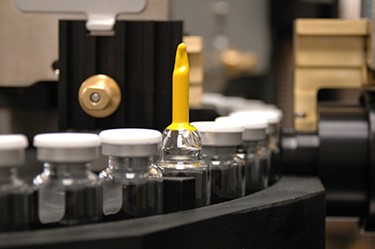In-Process Monitoring Of Headspace Oxygen Levels In Parenteral Containers

The need to monitor headspace oxygen levels in parenteral containers arises from the requirement to ensure the stability and potency of oxygen-sensitive product. Besides a loss of efficacy and reduction in shelf life, exposure of such products to oxygen can result in product discoloration, changes in dissolution rate and profile, and even toxicity or other pharmacological properties associated with negative side effects.
During the development of an oxygen-sensitive product, studies are performed that investigate the formulation’s interaction with oxygen. End-of-shelf-life stability studies verify that the product indeed retains efficacy under specified headspace oxygen levels. Such studies allow for the specification of appropriate initial headspace oxygen levels in the primary packaging as well as insight into the oxygen permeation rate into the package during shelf life. Finally, headspace oxygen levels are often monitored during the filling process as an in-process control (IPC) of the purging system used to bring headspace oxygen levels below the required specification.
Conventional techniques, such as electrochemical methods or gas chromatography, are slow and/or destructive. This results in headspace oxygen analysis which is both time and resource intensive. In addition, it is difficult to implement the conventional headspace oxygen methods at- or in-line for immediate feedback about the filling process. The destructive nature of the measurement also means that these conventional methods cannot be utilized for 100% inspection of product.
LIGHTHOUSE platforms for rapid non-destructive headspace oxygen inspection can streamline the monitoring of purge performance on the filling line. The LIGHTHOUSE laser-based headspace method shines light through the headspace to measure headspace oxygen concentrations in finished product containers (Figure 1). Based on spectroscopic methods, the measurement is analytical, rapid and non-destructive. The automated PULSAR Headspace Inspection Machine and the benchtop FMS-Oxygen Headspace analyzer (Figure 2) enable the in- and at-line inspection of oxygen levels in sealed parenteral containers.
Get unlimited access to:
Enter your credentials below to log in. Not yet a member of Pharmaceutical Online? Subscribe today.
